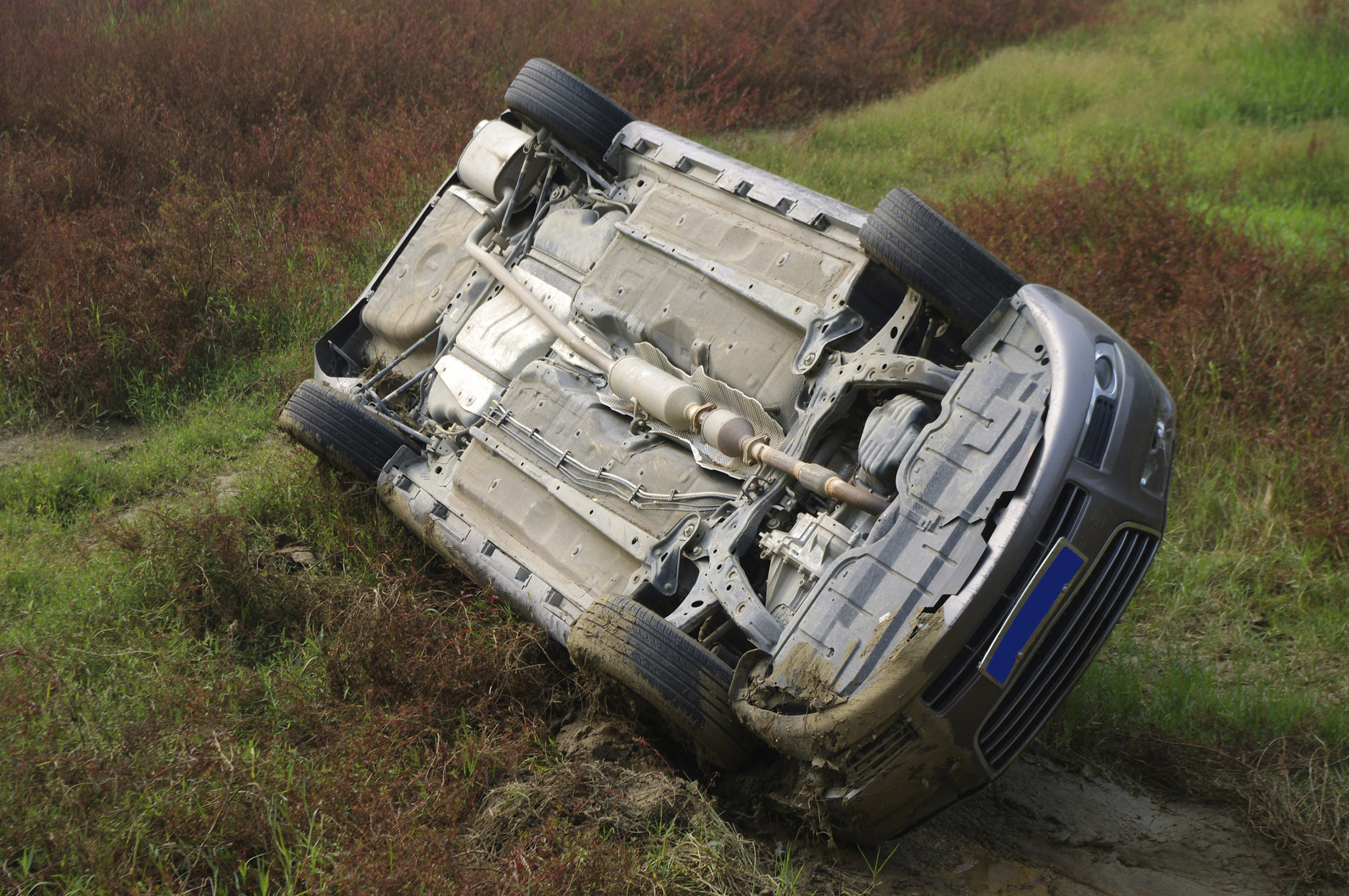Rollover crashes occur with surprising frequency in the Palm Beach County area, resulting in serious and often fatal injuries to drivers and passengers. Rollover accidents can occur for a variety of reasons, including negligent driver error or faulty vehicle design, which may require the hiring of an experienced South Florida accident attorney.
Florida Rollover Car Accidents
A rollover crash is defined as a motor vehicle accident where the vehicle has overturned at least 90 degrees to its side, regardless of whether the vehicle ultimately ends up on its side, top/roof, or even ending back upright on its wheels after the vehicle has stopped rolling.
When it comes to fatalities, the single most deadly car accident type is the rollover crash. In fact, according to a recent report on rollover crashes compiled by the Florida Department of Highway Safety and Motor Vehicles, in 2009, almost 5 percent of all car accident injuries and almost 7 percent of fatalities in Florida were caused by rollovers.
Causes Of Palm Beach Rollover Accidents
Rollover accidents can be caused by a variety of different factors, some associated with driver behavior, and some with other aspects present in the car or on the road.
Road Conditions: According to the Florida Department of Highway Safety and Motor Vehicles, most rollover crashes happen when a driver loses control over his or her vehicle, causing it to slip sideways. As the vehicle is slipping, something interferes and causes the vehicle to “trip” and roll over. The interfering object can be roadway conditions such as a curb, guardrail, a tree, or uneven ground on the side of the road.
SUV And Pickup Truck Design: Rollovers are more common in SUVs than in cars. In 2012, 55 percent of SUV occupants killed in crashes were in vehicles that rolled over. In contrast, the fatality rate for car rollovers was 24 percent. For pickups it was 46 percent.
SUVs and pickups tend to be involved in rollovers more than cars for several reasons. The first is due to the physical makeup of SUVs and trucks, which are taller and higher off the ground, causing their weight to be distributed higher off the road. This higher profile makes them more prone to tipping than a lower riding vehicle. Second, SUVs and pickups tend to be driven more on rural roads, where more rollover accidents occur.
Driver Error: Driver behavior can also contribute to rollover crashes, as rollovers can happen if the driver turns too sharply or with too tight of a turn radius at a high rate of speed.
The forces involved in a multi-vehicle pile-up can also cause a car to become airborne and roll over.
Injuries Sustained In Rollover Crashes
The violent nature of a rollover accident often results in serious or fatal injuries to the car’s driver and passengers. Because of the forces involved in a rollover crash, the driver and passengers can be partially or fully ejected from the vehicle, often causing life-threatening injuries.
Head injuries are also common in rollover accidents. According to a National Highway Traffic Safety Administration study, serious head injuries usually occur the first time the vehicle makes “roof to ground” contact, even if the vehicle rolls more than one time.
In addition, chest and internal injuries can be caused by the body hitting the steering wheel or other objects in the car. The extent of these injuries increases with the magnitude (or force) of the rollover flips.
Legal Help For Damages In A Palm Beach County Rollover
Rollover crashes are serious. When another driver’s actions or vehicle defects are the main causes, personal injury victims should understand their rights.
For help and advice regarding a rollover accident, contact the West Palm Beach motor vehicle accident lawyers at Sternberg | Forsythe, P.A. at 561-687-5660.

